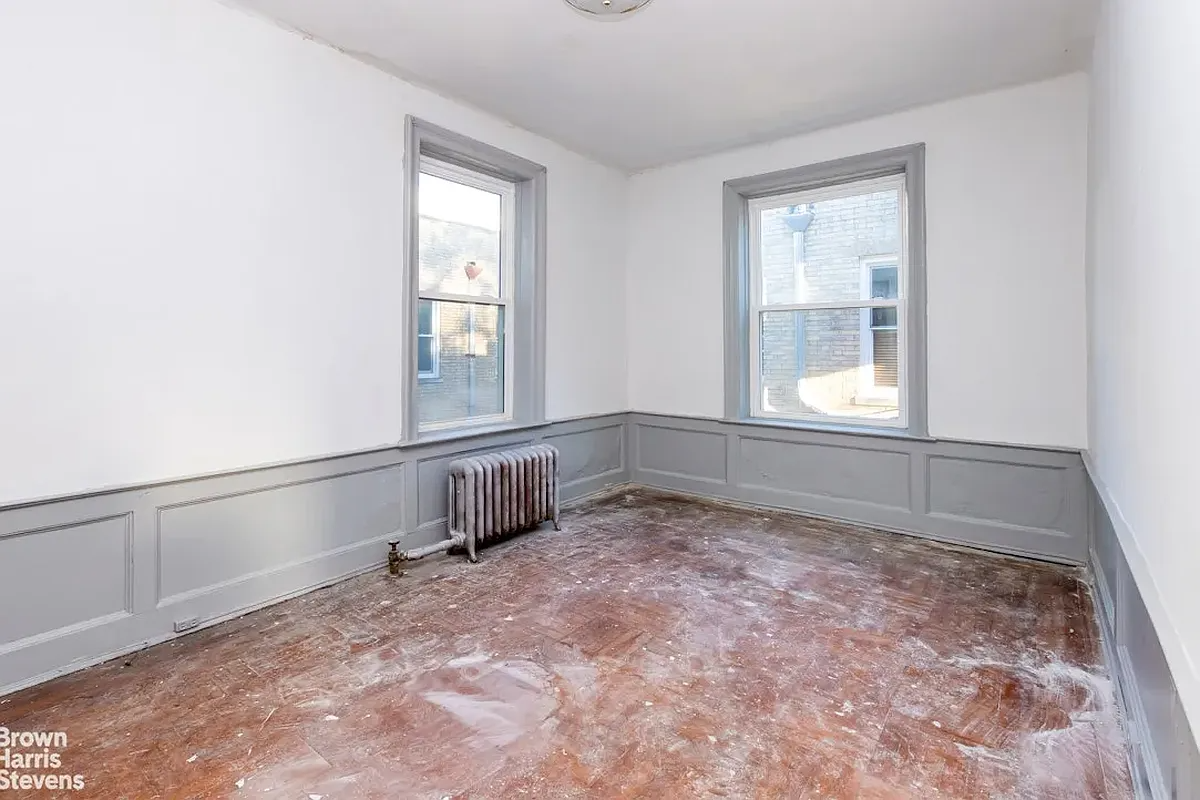A Push Toward Preservation in Coney Island
On the heels of Joe Sitt’s statement that the old buildings in Coney Island are “just horrible, rundown relics with nothing exciting about them, the preservationist group Save Coney Island has released renderings of what two of Coney Island’s historical buildings could become if they were preserved, restored, and reused. Among the threatened buildings are…


On the heels of Joe Sitt’s statement that the old buildings in Coney Island are “just horrible, rundown relics with nothing exciting about them, the preservationist group Save Coney Island has released renderings of what two of Coney Island’s historical buildings could become if they were preserved, restored, and reused. Among the threatened buildings are the Glasshorn, Henderson’s Music Hall (Save Coney Island’s rendering pictured above, compared with Sitt’s below), the Shore Hotel, and the Coney Island Bank. While the group fully supports the opening of Luna Park, they are racing against the clock to establish a Coney Island Historic District to protect these buildings from Thor’s wrecking ball. These historic buildings could be the foundation for a spectacular and unique 21st century Coney Island, said Save Coney Island spokesman Juan Rivero. But for that too happen we need to think more creatively about the enormous potential of Coney’s built legacy.
Save Landmarks of Coney Island from Cyclone Sitt [NY Daily News]
Sitt Disses Coney’s Historical Buildings [Brownstoner]
The Gutting of the Henderson Begins [Brownstoner]
Thor Reveals Soulless Vision for Surf Ave. [Brownstoner]
Thor and City Close on Coney Deal [Brownstoner]





Zoning (supposedly) is about controlling the negative externalities associated with a land use. Not denying your neighbors light and air, or creating excessive noise, etc, or otherwise preventing their peaceful enjoyment of their property. And legal pre-existing uses get grandfathered in and can stay forever – it’s not retroactive.
Landmarking protects against what – development that might offend your sense of aesthetics? To me, that should require a far higher burden of proof. I would prefer that the LPC keep in mind the common understanding of a landmark – a structure or place that is an orientation point for a community, or is prominant enough that it’s immediately recognizeable and assocated with its location. Not every building that somehow managed to avoid the wrecking ball for a few decades.
And I’d venture that the fact that Norah Jones made it through the process might be more attributable to the resources she has at her disposal than to the process’s user-friendliness.
Yes, navigating through landmarks takes time. That is no reason not to do it. Nora Jones got her windows, didn’t she?
For what it’s worth, I don’t particularly like the Hearst Building, and don’t think the two parts mesh all that well. That said, it’s only my opinion, which neither the Hearst organization or Landmarks cares about. They got the plan through, and we can still see the original building, it’s not my kind of creative, but it was creative none the less, and I applaud that the attempt was made to crack open the box of usual, and try something new. The same could be done here – try to crack open the box and let some new thoughts in. There is a vast space between tear down and preserve as is. No one has yet answered “why not?”
And, please, there is no such thing as being able to do what you want with your property. Everyone is restricted/hampered/protected by all kinds of laws, codes, restrictions and zoning requirements as to what they can or can’t do. I can’t open a laboratory, restaurant, or factory in my house, all of which could concievably aid me in paying for my house. What if my plans were made to do one of the above? Am I not burdened by the city telling me what I can and can’t do with my property? Everyone is.
re: montrose
You make LPC sound like a walk in the park. Remember Norah Jones adding windows? How long/much energy/much resources did it take to accomplish that; a perfectly reasonable request?
Regarding the Hurst tower you cited: even there the developer was at the mercy of the committees, and there were indeed dissenters:
She was joined in supporting the plan by every member of the commission but Deborah S. Gardner, who abstained out of concern that the landmark would come to be seen as merely a screenlike facade around the base of the new tower. She also said the commission had not heard enough about how Hearst planned to restore the original architectural details, which is part of the project.
or
‘Isn’t it a neat building?’ is not the question,” said Simeon Bankoff, executive director of the Historic Districts Council, which did not support the plan. ”The question is whether it’s appropriate. We feel it’s not an appropriate building. It does not respond to, respect or even speak to its landmark base.”
Why should Mr. Bankoff or Ms. Gardner, or someone like them, be able to disapprove a plan for the building? Again the buildings are neither that historic nor that important by anyone’s reckoning; they just happened to not fall/burn/be demolished.
It takes time, energy, and resources to get something approved by LPC; why should an owner be forced to subscribe when their property doesn’t meet the criteria, and the criteria wasn’t in effect when the property was purchased? It’s reverse grandfathering, and should be used sparingly. People get bent (rightly) over eminent domain; why do the same people feel it’s fine to subject property owners retroactively to an aesthetic committee?
With all due respect, and as someone agrees with the idea of saving important building, it’s just another layer of outsider telling a private owner what he/she can/cannot do with their building/property.
I don’t get it… when I hear ‘Coney Island’ I think fast food theme part. Even historically.
The amusements were nicer and men wore hats and ladies carried parasols, but they were there for the hot dogs and rides.
I’m all for bringing back rides like the Steeple Chase (mechanical horsies on tracks) that I’ve seen in old photos before the fire — but I’m not sure what’s so special about that. It was just a seedy theme park full of Carnies.
Who said the building owner can’t use it in a manner in which they choose? People who don’t like the idea of preservation seem to come up with all kinds of fiction as to how horrible landmarking is, and use it to scare off those who might consider it. Landmarking is flexible enough for adaptive reuse, such as above, as well as for other creative solutions. Look at the Hearst Building on 57th St. I’m not saying that the Hearst solution works for this, all I’m saying is that a fear of landmarking, added to a lazyness in taking the time and money for creativity and ingenuity have fostered an attitude that it is better to have a couple of buildings whose purpose seems to be to hold up signs, rather than a creative use for buildings that are all that is left of classic Coney Island.
Instead of a fast food theme park, how about a Coney Island that is worthy of the history the very name “Coney Island” invokes? How about hiring some creative architects, who are out there languishing in this time of mediocrity, to build upon the past for a better, yeah, even a more lucrative future. Why dumb it down to a stripmall on Route xx? As I said before, Save Coney Island is not asking to save every brick, just the most restorable buildings. If Joe Sitt had a creative node in his brain, and some vision, he’d jump at the chance to work with SCI and other preservationists, and come up with something unique, worth coming out to Coney for, and could be a legacy that outlives him. Taco Bell on the Boardwalk is not that legacy.
“If it’s not important and it’s not even particularly old then it’s just porn for people who like older buildings. ”
QOTD!!
re: montrose morris
Because landmarking sets limits forever on what the owner is allowed to do with the building. If it’s not important and it’s not even particularly old then it’s just porn for people who like older buildings.
It forever restricts the aesthetics of the building, it restricts future uses (commercial uses – certain signage will be barred for example), and it restricts the general options for the lot owner.
Landmarking is great but it’s important to remember that property owners are entitled to use their properties as allowed by law, not to have those rights encumbered simply because someone likes older buildings AFTER the fact. I don’t own a sq.ft but I can’t stand watching owner’s rights be diminished at the bequest of a vocal minority.
The buildings’ ability not to be burned or demolished after 70 years is not a statement of quality after all; if my local CVS lasts 70 years I won’t recommend it be landmarked either.
Oh God, I just love that second rendering…it’s truly sublime. Really, what are we creating here, buildings with some advertising space, or advertising space with some buildings?
OK, the buildings they want to save are not of the quality of Grand Central Station. So what? There were a couple of really great huge hotels there at the turn of the century, long gone, and then there is Child’s, but aside from that, Coney Island has always been on the tacky side. That’s part of its history and charm. So why not save what little is left? Preservationists aren’t asking to encase the entire site in amber, just save a handful of original buildings that have stood the test of time, which for the area makes them ancient monuments.
To paraphrase Joe Sitt, there’s nothing exciting about his rendition, either. It doesn’t say Coney Island, and adds absolutely nothing to the streetscape. It could be anywhere, and already is everywhere. OK, the preserved building isn’t thrilling, but I much prefer it. No one said that rendering was their final plan, it was just a suggestion of how to incorporate the theatre. Luna Park incorporates old and new, but is mostly new. Why not do the same here, incorporate the old and new, not tear everything down? I support Save Coney Islands efforts.